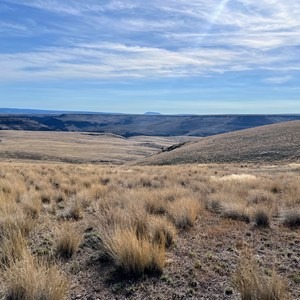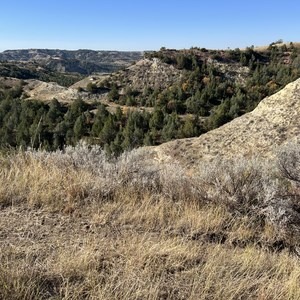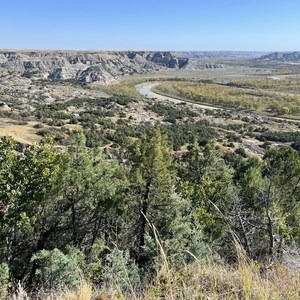You are here
Disaster Peak Road is a 30.3-mile out-and-back route along a dirt road that straddles the border of Oregon and Nevada, west of McDermitt, NV. Part of the extensive Oregon Desert Trail, this dirt road offers an invigorating and scenic journey through a less frequented part of the high desert landscape. It provides hikers, off-road vehicle enthusiasts, runners, and mountain bikers with a unique opportunity to explore the area's natural beauty and solitude. This route serves as an excellent introduction to the surrounding wilderness areas, perfect for planning further adventures.
As you hike along Disaster Peak Road, you're immediately welcomed by the vast openness of the high desert. The road is flanked by a rich tapestry of sagebrush and juniper, with the impressive Disaster Peak in the distance. This route acts as a portal to various natural areas, including the Oregon Canyon Wilderness Study Area, Fifteen Mile Creek Wilderness Study Area, Willow Creek Wilderness Study Area, Mahogany Wilderness Study Area, and Disaster Peak Wilderness Study Area. The trail features a gentle ascent, punctuated by occasional ups and downs, offering panoramic views of the surrounding valleys and mountain ranges. The length of this route can be adjusted to meet your preferences.
TRAILHEAD
The trailhead can be accessed by vehicles capable of handling rough terrain, and hikers are advised to park safely off the road.
FLORA AND FAUNA
The area's flora is predominantly high desert vegetation, including sagebrush, juniper, and occasional wildflowers that bloom after rainfall. Fauna in the area might include pronghorns, jackrabbits, and various bird species adapted to the desert environment. Keep an eye out for signs of larger mammals such as deer and coyotes.
SAFETY AND CONSIDERATIONS
-
Water: There are no reliable water sources along the trail, so carry sufficient water for your hike.
-
Sun Protection: The trail offers minimal shade, making sun protection essential.
-
Navigation: While the road is generally easy to follow, carrying a map, compass, or GPS device is advisable in case of unmarked offshoots or exploring beyond the main road.
-
Weather: Be prepared for rapid weather changes and check the forecast before heading out.
CAMPING AND PERMITS
Disaster Peak Road straddles the Oregon-Nevada border, providing access to various natural areas and featuring numerous spots for primitive camping.
Dispersed camping may be permitted in the area. It is advisable to consult with local land management agencies regarding any necessary permit requirements and to adhere to Leave No Trace principles to minimize environmental impact.







Comments
Sign In and share them.